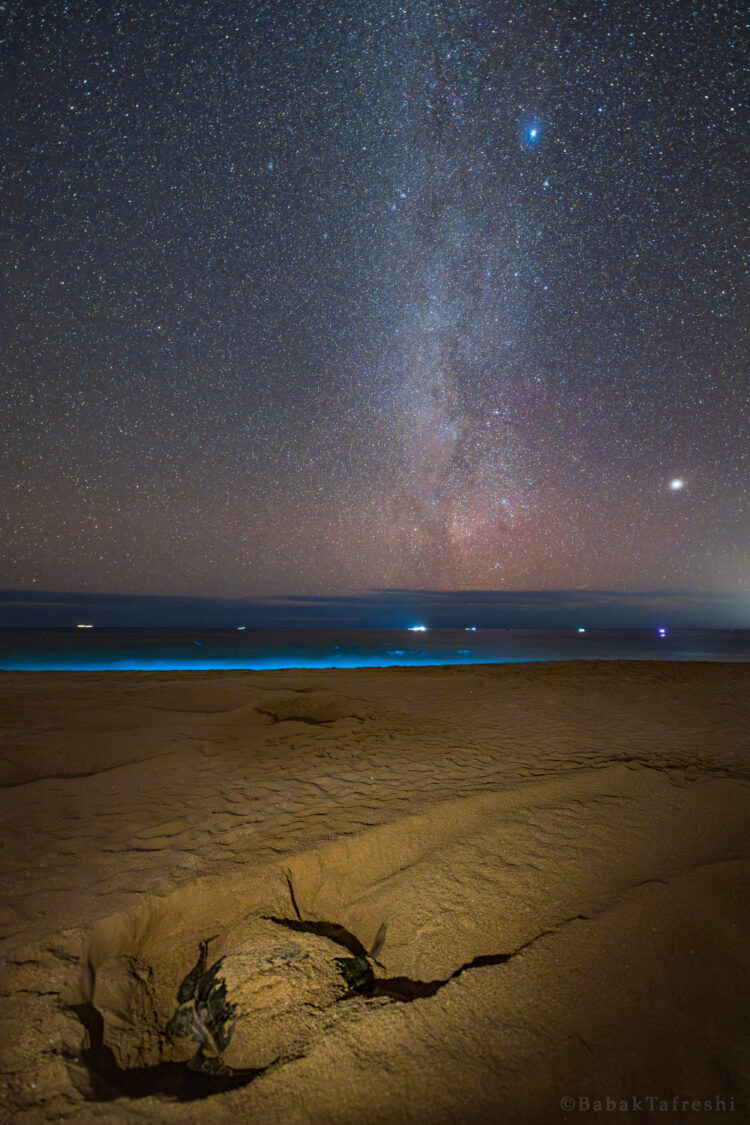Turtle Beach
Description
A sea turtle lays eggs under the breathtaking starry sky. The lights of fishing boats are visible out on the sea, but much closer to the shore the blue glow of bioluminescent plankton can be seen in the breaking waves on the coast of Arabian Sea. Bright stars Sirius and Canopus appear next to the winter Milky Way.
From the photographer: “All sea turtles are sensitive to bright artificial lights around their nesting beaches. I was carefully using a dim soft yellow light for this 15-second single exposure. Then I switched off and spent a long time listening to the waves and watching the nesting turtle under nothing but starlight. It’s critical to avoid using bright lights, specially white LEDs, in their environment. I was delighted to see how this beach at Ras al-Jinz Turtle Reserve is protected, kept naturally dark, and the tourists are only allowed in guided tours that use red lights. Sea turtle population has largely declined globally. Rising temperatures, plastic in the ocean, fishing nets, are some of the other major problems.
Tropical communities around the world are becoming aware of light pollution’s immense impact on sea turtles. Some coastal lights are changed to turtle-friendly shielded and motion-sensor red-orange options but the turtle nesting and successful hatching are still decreasing in many other brightly lit coastal areas.
Hatching mainly occur at night. The babies are guided to the ocean by an inborn tendency to move away from the dark silhouettes of the dunes and vegetation and toward the brightest direction, which on a natural beach is the night sky reflected off the ocean. Inland artificial lights disorient hatchlings (in some cases by 100%), leading them to wander inland where they die of dehydration, exhaustion, or predation, or be crushed by vehicles on coastal roads. Today we know light pollution disturbs many other species, vital insects and night pollinators, and billions of migratory birds.”

comments (1)